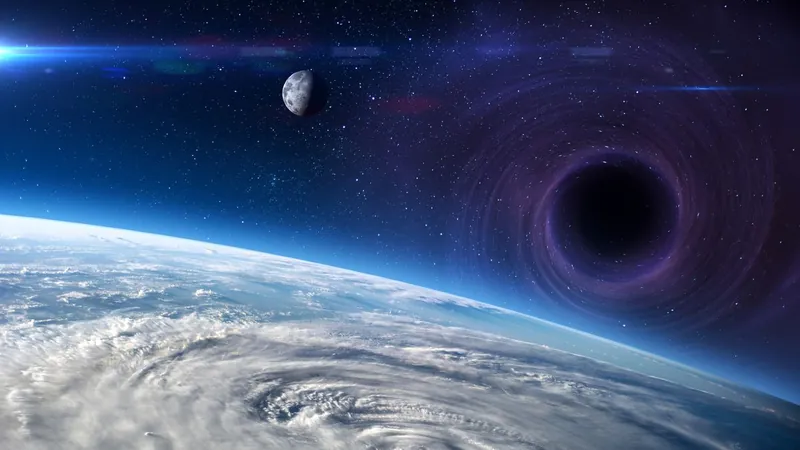
Could Primordial Black Holes Be Passing Through Our Solar System Every Decade?
2024-09-17
Author: Yan
Introduction
A groundbreaking study suggests that if primordial black holes, which may have formed just after the Big Bang, exist, one could potentially pass through our solar system every ten years.
Dark Matter and Primordial Black Holes
These minute black holes could generate tiny gravitational distortions detectable by astronomers, opening a new avenue for understanding dark matter, the elusive substance that makes up approximately 85% of the universe's mass.
Dark matter is believed to exist due to its gravitational effects on visible matter and light, yet no experiments have successfully identified the particles that constitute it. One intriguing hypothesis is that primordial black holes, formed from density fluctuations in the early universe, might account for this unseen mass.
While most known black holes range from stellar-mass to supermassive sizes, primordial black holes could be remarkably light—around a billion times lighter than our Sun and possibly no larger than a hydrogen atom.
Study Findings
According to co-author Sarah Geller, a theoretical physicist at the University of California at Santa Cruz, these primordial black holes are expected to be significantly less massive and more challenging to detect than their giants. The research focused on the potential frequency of these black holes flying near the inner planets of our solar system—Mercury, Venus, Earth, and Mars.
The study posits that if these primordial black holes do exist, their gravitational pull could create observable "wobbles" in the orbits of nearby objects, with at least one such flyby occurring every decade.
Potential Implications
An exciting element of the research is the possibility that several of these flybys could have already taken place in recent years, coinciding with advancements in detection technology that allow scientists to track and analyze such minute orbital perturbations.
While the scientists caution that they are not claiming that primordial black holes definitely exist or that they comprise the bulk of dark matter, they propose that if both statements hold true, we should expect a black hole to traverse the inner solar system every one to ten years.
Historical Context
Historical observations of cosmic phenomena suggest that space is far from empty. Cosmic objects, and even mysterious particles, could be more common than previously believed.
Future Research Directions
The researchers emphasize the need for more sophisticated simulations to accurately analyze inner solar system orbits. Benjamin Lehmann, co-author and theoretical physicist at MIT, noted that collaborating with experts in solar system modeling could enhance their approach.
Understanding the specifics of what constitutes a signal indicative of a primordial black hole will be pivotal to the next steps in this research.
Conclusion
Astronomers could eventually utilize advanced observational methods to help filter genuine signals from measurement errors. Despite the complexity, the concept of finding primordial black holes through their gravitational effects is an enticing prospect for scientists seeking to deepen our understanding of the universe's makeup.
In summary, the hypothesis surrounding primordial black holes and their potential passage through our solar system introduces tantalizing possibilities into the ongoing search for dark matter. As research continues, we may soon uncover whether these ancient cosmic travelers are indeed influencing the very structure of our celestial neighborhood. Stay tuned as scientists unravel the mysteries of the universe, one primordial black hole at a time!


 Brasil (PT)
Brasil (PT)
 Canada (EN)
Canada (EN)
 Chile (ES)
Chile (ES)
 Česko (CS)
Česko (CS)
 대한민국 (KO)
대한민국 (KO)
 España (ES)
España (ES)
 France (FR)
France (FR)
 Hong Kong (EN)
Hong Kong (EN)
 Italia (IT)
Italia (IT)
 日本 (JA)
日本 (JA)
 Magyarország (HU)
Magyarország (HU)
 Norge (NO)
Norge (NO)
 Polska (PL)
Polska (PL)
 Schweiz (DE)
Schweiz (DE)
 Singapore (EN)
Singapore (EN)
 Sverige (SV)
Sverige (SV)
 Suomi (FI)
Suomi (FI)
 Türkiye (TR)
Türkiye (TR)
 الإمارات العربية المتحدة (AR)
الإمارات العربية المتحدة (AR)